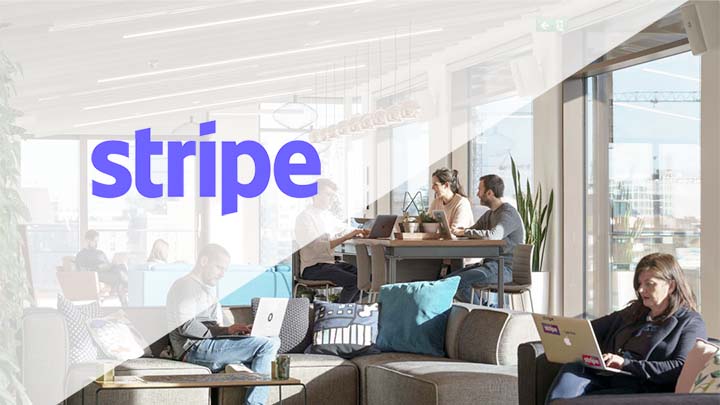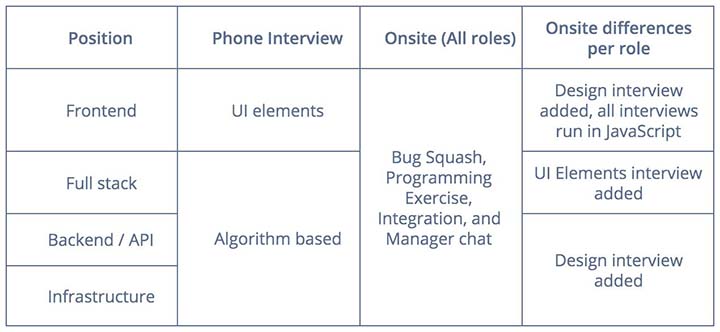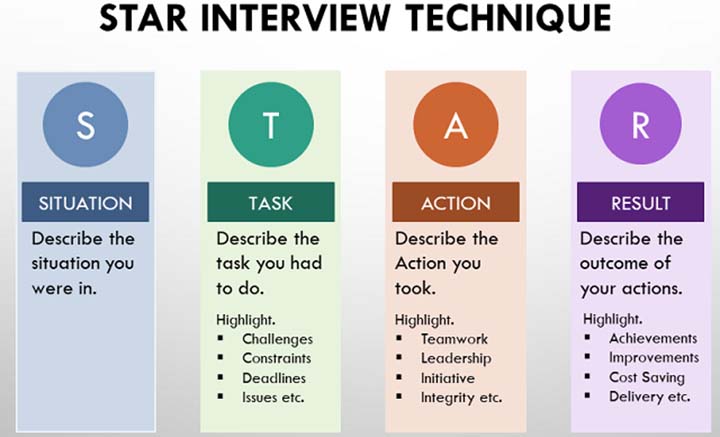The Stripe Software Engineer Interview Process and How to Ace it
An interview process for a software engineer position verifies two things: 1) your cultural fit and 2) your technical skills. The following article will help you stand out during Stripe's interview process by sharing insights on both aspects.

With its $95 billion valuation, working at Stripe is a no-brainer (even though it doesn't have a 4 Day Work Week policy 😇). Whether you want glory, wealth, knowledge, or simply a company that takes good care of its employees: you will receive it all. However, the competition to get in is fierce.
Let's dig into how you can ace your Stripe interview.
I. The Interview Process
The interview process is divided into two phases spanning over a month, a phone screen and an on-site interview. The content of the interviews varies according to your software engineering specialty: frontend, backend, fullstack, or infrastructure. The hiring manager will detail the whole process for you at the beginning of it.

In the event of a negative outcome, you’ll be able to apply again in another six to twelve months.
1. Phone Screen
The phone screen happens in two parts.
Recruiter interview
A 30-minute informal chat to orientate your interview process at Stripe.
How to prepare:
- Write down short concise descriptions for each item on your resume and how it fits in Stripe’s daily operations.
- Understand Stripe’s company culture (see part II of this article), how they work and what they stand for, and how it relates to your personal career aspirations.
- List down Stripe’s current products and services, including those who aren’t directly related to their core business activities (e.g Stripe Press)
Technical interview
A 60-minute pair programming interview via video call with a software engineer. An algorithmic challenge or a user interface problem depending on your track.
How to prepare:
- Train on platforms like Leetcode or Hackerrank.
- Make sure to pick a language and a text editor you are familiar with beforehand
- Focus on quality. Document your code, indent, clearly name your variables, and respect the principle of single responsibility.
- Ask questions about styling (indentation, naming convention, etc.) and clarifications about the problem at hand (e.g general questions and non-functional requirements) to showcase your communication skills. Be a good listener and apply the feedback that’s given to you.
- Think out loud, tell the interviewer what’s going on in your head.
2. On-site interview
Five parts of roughly 45 minutes each: another coding interview, a system design challenge, a behavioral interview, a bug hunt, and an integration problem.
You will receive a document to prepare beforehand, so don’t polish all your skills before applying and focus on what’s needed to pass if you are a bit tight on time.
Programming exercise
A 45-minute pair programming interview based on a real world problem.
How to prepare:
- Same as the technical phone screen.
- Be mindful of your body language and how to use it to better convey your train of thoughts. For example, drawing on a whiteboard makes it easier to explain your mental process.
System design
A 1-hour whiteboard interview to design a software system with a Stripe engineer. For example, design an authentication system, or a microservice to manage customers.
How to prepare:
- Be proactive with questioning, don’t wait for the interviewer to tell you everything. Think like a requirement engineer interviewing a customer.
- Be crystal clear about assumptions you make while designing.
- Design with reliability in mind. Discuss possible points of failure.
- Think aloud.
Behavioral
An interview to assess your cultural fit. If the way you work aligns with Stripe’s values, and if your leadership experience matches what is expected of you in the workplace. How to prepare:
- Understand Stripe’s company culture (see part II of this article) and how you can relate to it from experience.
- Master the STAR methodology to efficiently tell past experiences (see part III of this article).
Debugging
Given a codebase in the language of your choice, find and fix the bug responsible for a failed test.
How to prepare:
- Always explain your resolution steps.
- Comment undocumented and convoluted code to illustrate your thought process.
- Write more unit tests to improve test coverage and find border cases.
- Get acquainted with your language / editor debugging tools.
Would you like a 4 day work week?
Integration
One hour to integrate a suite of Application Programming Interfaces (API) into an existing program.
How to prepare:
- Get acquainted with the concept of REST API
- Learn how to perform requests and parse responses in your preferred language
II. Cultural Fit: understanding the company culture
The first goal of an interview process is to assess if your values match the company culture. How you work, talk, write, and present yourself must resonate with what Stripe stands for. A look at the official website gives us lots of insights we will now summarize.
Stripe’s mission is to increase the gross domestic product (GDP) of the Internet, the total value of goods produced and services provided on the Internet over a year. This is the company WHY, its purpose. And the way they go about it is to create software to receive payments and administrate businesses of all sizes online. This is its WHAT, the results of its day-to-day activities.
But what matters most to you are the HOWs: the guiding principles, the values of Stripe. Belief in Stripe’s values is no joke, as 92% of surveyed employees declare believing in the future and mission of the company.
Transparency
Stripe provides a highly cross-functional environment where great communication skills, both verbal and written, are prized.
How to prepare:
- Learn to provide constructive feedback, using non-violent communication for example.
- Always over-communicate with your interviewer: tell her how you think and feel when solving problems, display your listening skills, and be curious.
- Write documentation for your code: in technical interviews, unless explicitly told not to do so, documenting your code demonstrates care for your fellow developers.
- Show you can speak and write clearly and concisely, during your interviews and in your resume and cover letter, using data-driven, factual thinking.
- Show your ability to learn from others and teach others. Listen and apply the feedback given to you. Explain the actions you perform in a didactic way by stating facts, hypotheses, past experiences, and a clear methodology.
- Show humility: no bragging, accept help and guidance, let your work and the numbers speak. Admit when you’re wrong.
- Show you can trust others and be trusted: give examples of situations where you delegated work or accepted your mistakes.
Maker culture
In Stripe’s own words, a culture built for builders where you are expected to be a self-responsible fast learner and self-starter with the ambition to grow the online economy.
How to prepare:
- Stripe helps more new businesses get started, so join the so-called Creator Economy: create a Stripe account and use it to sell things you made yourself.
- Demonstrate your ability to learn hard things fast, even if they aren’t part of your core skillset: register for an online course, learn a new language, publish blog posts about your learnings, cultivate hobbies, etc.
- Learn to learn by doing. Even if you don’t know how to do something, you should know where to start researching.
- List down personal projects you launched start to finish, as well as habits, and experiences showcasing your passion for your particular field of expertise.
- Show you care as much about perfecting the details as getting things done: find examples of situations where you had to build software products in an iterative fashion, slowly and tenaciously improving things tiny bit by tiny bit. Pay attention to performance, accessibility, reliability, and security.
- Display passion and ambition: tell your interviewers why you want to work for Stripe, how growing the GDP of the internet will make people happier by creating new opportunities or how the work connects to your dreams.
- Demonstrate you aren’t afraid of risk, uncertainty, and being confronted with unknown problems.
- Show proactivity and thought leadership: write a blog, create a business, collaborate with friends on a project, etc.
Sustainability
The company takes great pride in its stellar customer support and the reliability of its infrastructure. Thinking long-term is part of Stripe’s DNA.
How to prepare:
- Show you prioritize quality over quantity.
- Show you’re in for the long run, that you do not quit easily and care about the impact of what you do and how you act.
- Display honesty, confidence, and self-control.
- Own responsibility if you make mistakes.
- Demonstrate how you can strive in risky environments, show flexibility even if it sometimes means sacrificing work/life balance from time to time.
- Learn to think from first-principles. Use facts and data to make your points, and be open to criticism.
- Always look for better. There is always something to fix, improve, or learn.
- Show you care about scale, in your vision and the way you code for example.
- Show you are optimistic about the future and that you’re convinced what you do is important for it.
Empowerment
Stripe’s culture is about enabling others to go on to do great things: removing the barriers to eCommerce, providing great customer support, and nurturing a warm atmosphere between colleagues.
How to prepare:
- Think of moments when you had to go out of your way to help others, even if the job was below your capacities.
- Add open-source projects you contributed to and volunteering jobs in your resume.
- Show you can put the company first before your own interests.
- Show you can work closely with your users / customers.
Global mindset
Stripe is a massive company of 4,000 employees spread worldwide, with many offices and a remote-friendly policy.
 Stripe HQ in San Francisco
Stripe HQ in San Francisco
How to prepare:
- Provide remote work experience: online projects, job positions, massive open online courses, etc.
- Push forward any international experience you had: travels, exchange studies, learning a foreign language, multicultural background, etc.
Diversity
Cooperation between stakeholders with different cultures, expertises, and backgrounds is key to Stripe’s success.
How to prepare:
- Demonstrate your ability to collaborate with others who are not forcibly from the same background as yours: think about past experiences working with a variety of stakeholders and how you handled conflicts.
- Think of an experience where you showed open-mindedness and inclusiveness.
- Think of an experience where you valued cooperation over competition.
Everything you do throughout the whole process tells a story, and you want this story to align with the company’s story. Use the STAR methodology to tell one while building up on what you know about Stripe.
III. The STAR Methodology
Telling a past experience to an interviewer can be daunting. Your memory might be fading away, or you might feel too stressed to even look at her in the eyes: that’s when the STAR methodology helps you structure your thoughts by following a simple trick.
STAR stands for Situation, Task, Action, and Result:

Situation
Definition: What was the inciting moment, when and where it happened, and the project or company behind the situation.
Example: Two years ago, I was working at Paypal in the finance department. The company planned to release a new product to address the Chinese market.
Task
Definition: what was asked of you within the overall project.
Example: I worked as a software engineer to release the first iteration on a tight deadline.
Action
Definition: how you personally completed the task.
Example: I sat down with the project manager and made sure we could deliver quality software by ruthlessly prioritizing and testing our features.
Result
Definition: what you accomplished and learned.
Example: I learned that, no matter the complexity of the problem, nothing is impossible to accomplish with the right team.
How to prepare
- Write down the story behind each item on your resume by following the STAR methodology.
- For behavioural questions, look up common ones online and highlight how your actions align with Stripe’s values in each answer.
Prepare a plan B
Whatever the outcome of the interview process, you now know what to look for to prepare an interview. If the result is negative, don't worry: you will still be able to re-apply in 6 to 12 months. And in the meantime, you can check out our list of jobs with a 4 day work week